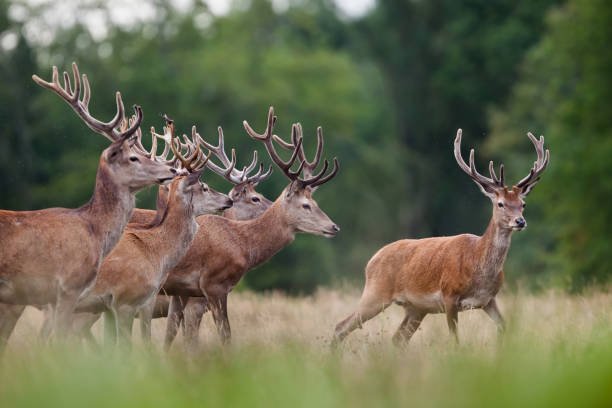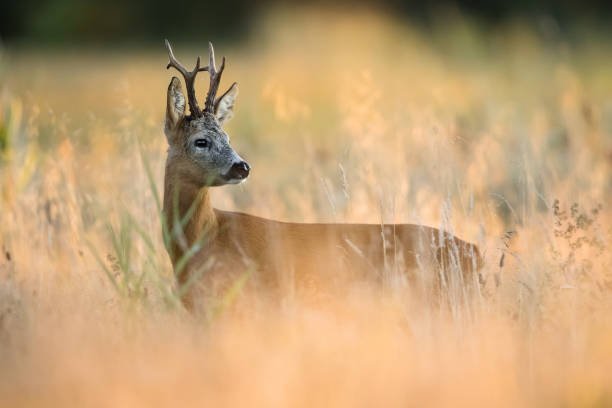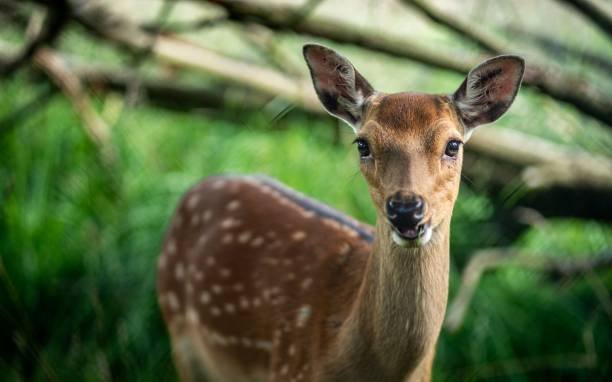Can I legally rescue and care for an injured deer on my own?

Introduction:
In this article, we delve into a question that tugs at the hearts of many animal lovers. The sight of a wounded creature often sparks an innate desire to help, but navigating the legalities surrounding wildlife rescue is complex. Understanding the boundaries between empathy and legality is crucial, not just for the well-being of the animal but also to safeguard the interests of those attempting to aid them.
With wildlife conservation laws varying globally and even regionally, this article aims to provide clarity. We explore the ethical and legal dimensions, offering insights into pertinent regulations, guidelines, and best practices. So, if you’ve ever wondered about your rights and responsibilities when encountering an injured deer, read on for a comprehensive guide to making a difference within the bounds of the law.
Wildlife Rescue Laws and Regulations:
Understanding the legal framework surrounding wildlife rescue is essential before attempting to care for an injured deer. Laws and regulations governing the rescue and rehabilitation of wildlife vary widely by location. In many places, it’s illegal to possess, transport, or care for wildlife without the appropriate permits. These permits are typically issued by wildlife agencies or conservation authorities.
To legally rescue and care for an injured deer, you must first research and familiarize yourself with the specific laws in your area. These laws often outline who can rescue wildlife, what species can be cared for, and the conditions under which they can be rehabilitated. Violating these regulations can result in fines or legal consequences.
Assessing the Deer’s Condition and Needs:
Before attempting to rescue and care for an injured deer, it’s crucial to assess its condition accurately. Approach the animal cautiously to avoid causing additional stress or harm. Observe the deer from a safe distance to determine the nature and extent of its injuries. If the deer is conscious but appears injured, keep in mind that they can be unpredictable and may lash out if they feel threatened.
Assessing the deer’s needs involves determining whether immediate rescue is necessary. Some injuries may be minor and can be left to heal naturally, while others may require professional intervention. A deer with severe injuries or in a life-threatening condition should be rescued promptly, whereas a deer with minor injuries might benefit from monitoring from a distance.
Obtaining Proper Permits and Permissions:
Rescuing and caring for an injured deer often requires obtaining the necessary permits and permissions. Wildlife agencies and conservation authorities issue these permits to ensure that individuals rescuing and rehabilitating wildlife are qualified and following proper procedures. Permit requirements can include completing training or coursework in wildlife rehabilitation, demonstrating the ability to care for the deer, and having appropriate facilities and resources.
It’s essential to contact your local wildlife agency or authority to inquire about the specific permits and permissions needed in your area. Attempting to rescue or care for a deer without the required permits can lead to legal consequences and potentially harm the animal if not done properly. Adhering to permit and permission requirements ensures that you are acting within the bounds of the law while providing the best possible care for the injured deer.
Safe Handling and Transportation Guidelines:
When it comes to rescuing and caring for an injured deer, safe handling and transportation are critical aspects. Deer can be unpredictable and potentially dangerous when injured, so following proper guidelines is essential for both your safety and the deer’s well-being.
Safe handling starts with approaching the deer cautiously. Keep a safe distance and avoid sudden movements or loud noises that can cause stress. If you need to physically handle the deer, wear protective gear, such as gloves, to reduce the risk of injury. It’s crucial to immobilize the deer safely to prevent further harm during transportation. This might involve using blankets or a specialized wildlife rescue bag to minimize stress and protect the deer from injury.
During transportation, ensure that the deer is securely contained to prevent it from moving around and potentially worsening its injuries. Use a well-ventilated, escape-proof container or transport cage. Covering the deer’s eyes can also help reduce stress. When transporting the deer, drive carefully to minimize jostling and stress, and avoid exposing it to extreme temperatures or harsh conditions.
Rehabilitation and Care Protocols:
Rehabilitating an injured deer is a complex process that requires knowledge, resources, and commitment. Once you’ve safely rescued the deer, it’s essential to follow proper rehabilitation and care protocols to give it the best chance of recovery.
Start by providing a quiet, stress-free environment for the deer to recover. Ensure that its enclosure is secure and free from potential hazards. Consult with a wildlife rehabilitation expert or a veterinarian to determine the appropriate diet and medical care for the deer’s specific condition. In some cases, you may need to administer medication or perform wound care under professional guidance.
Rehabilitation also involves addressing the deer’s emotional and psychological needs. Minimize human interaction to reduce stress, and provide appropriate enrichment, such as hiding spots or natural vegetation, to simulate its natural environment. Regularly monitor the deer’s progress, making necessary adjustments to its care plan as it heals.
Release and Follow-up Responsibilities:
Releasing an injured deer back into the wild is the ultimate goal of wildlife rehabilitation. However, it’s a step that requires careful consideration and adherence to specific guidelines.
Before releasing the deer, ensure that it has fully recovered and can fend for itself in its natural habitat. Consult with wildlife experts to determine the most suitable release location, taking into account factors like the deer’s original home range and local environmental conditions. Release should ideally occur during the appropriate season and in an area with suitable food and shelter.
After release, follow-up responsibilities include monitoring the deer’s adaptation to its environment. This may involve periodic checks to ensure it is thriving and integrating successfully into the wild. Keep in mind that some deer may have lingering health issues or may require supplemental feeding during the initial period post-release.
Conclusion:
I hope this discussion has shed light on the complexities of rescuing and caring for an injured deer on your own. While the desire to help injured wildlife is commendable, it’s important to remember that wildlife regulations and laws vary widely by location and can be intricate.
If you encounter an injured deer, it is generally best to contact your local wildlife authorities or a licensed wildlife rehabilitator. They possess the expertise, permits, and facilities required to provide appropriate care and ensure the deer’s well-being while complying with legal requirements. Attempting to rescue and care for a deer independently may lead to unintended legal consequences, as well as risks to your safety and the deer’s health.
By working within the established legal framework and seeking professional assistance, you can contribute to the rehabilitation of injured deer in a responsible and lawful manner, ultimately ensuring the best possible outcome for these majestic animals.










Post Comment